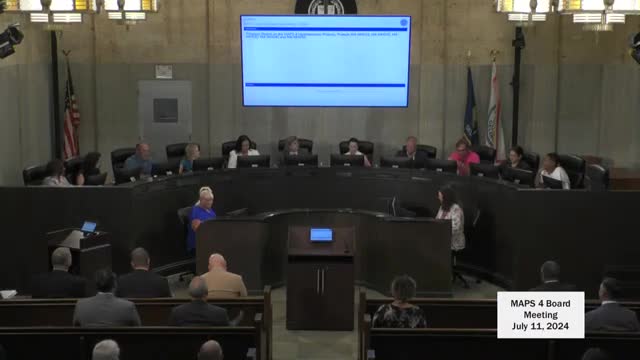Oklahoma City launches ambitious plan to combat homelessness
July 12, 2024 | Other Public Meetings, Oklahoma City, Oklahoma County, Oklahoma

This article was created by AI summarizing key points discussed. AI makes mistakes, so for full details and context, please refer to the video of the full meeting. Please report any errors so we can fix them. Report an error »

In a recent government meeting, Greg Shen from the Oklahoma City Housing Authority provided an update on the city's homelessness initiatives, highlighting significant progress and future plans. The meeting welcomed new board members and included a recap of previous reports, emphasizing the ongoing commitment to address homelessness through various projects.
Shen reported that the Housing Authority has successfully established a vendor pool and completed an annual resident survey, as mandated by the MAPS for Homelessness initiative. A public comment system has also been launched, allowing community members to provide feedback easily. The housing plan is currently in development, with a focus on determining the need for additional permanent supportive housing units.
Key projects include the Vida Nova supportive housing initiative, which involves converting a former motel into housing for the chronically homeless, and a second project aimed at veterans experiencing homelessness. The Housing Authority aims to deliver 500 supportive housing units and renovate 1,500 existing public housing units to prevent further homelessness.
Funding details revealed that the first allocation of MAPS funding, totaling over $10 million, is being strategically utilized across various projects. Notably, $3 million has been allocated to Vida Nova, with expectations to leverage an additional $6 million from other sources. The overall funding strategy indicates that only 7% of the total project costs will come from MAPS funding, with the remaining 93% sourced from other funding avenues.
Shen also addressed concerns regarding resident displacement during renovations, assuring that residents will be relocated within the site and provided with options to return to their original units or move elsewhere if they choose. The Housing Authority is committed to keeping residents informed throughout the process.
In addition to homelessness initiatives, the meeting included a presentation on the MAPS 4 beautification master plan. The plan aims to enhance the aesthetic appeal of Oklahoma City through community engagement and strategic design principles. Feedback from over 35,000 survey responses indicated a desire for community anchors, improved walkability, and sustainable design elements. The beautification efforts will focus on creating people-centered spaces and enhancing connections throughout the city.
Overall, the meeting underscored Oklahoma City's proactive approach to tackling homelessness and enhancing community spaces, with a clear commitment to transparency and resident involvement in the planning process.
Shen reported that the Housing Authority has successfully established a vendor pool and completed an annual resident survey, as mandated by the MAPS for Homelessness initiative. A public comment system has also been launched, allowing community members to provide feedback easily. The housing plan is currently in development, with a focus on determining the need for additional permanent supportive housing units.
Key projects include the Vida Nova supportive housing initiative, which involves converting a former motel into housing for the chronically homeless, and a second project aimed at veterans experiencing homelessness. The Housing Authority aims to deliver 500 supportive housing units and renovate 1,500 existing public housing units to prevent further homelessness.
Funding details revealed that the first allocation of MAPS funding, totaling over $10 million, is being strategically utilized across various projects. Notably, $3 million has been allocated to Vida Nova, with expectations to leverage an additional $6 million from other sources. The overall funding strategy indicates that only 7% of the total project costs will come from MAPS funding, with the remaining 93% sourced from other funding avenues.
Shen also addressed concerns regarding resident displacement during renovations, assuring that residents will be relocated within the site and provided with options to return to their original units or move elsewhere if they choose. The Housing Authority is committed to keeping residents informed throughout the process.
In addition to homelessness initiatives, the meeting included a presentation on the MAPS 4 beautification master plan. The plan aims to enhance the aesthetic appeal of Oklahoma City through community engagement and strategic design principles. Feedback from over 35,000 survey responses indicated a desire for community anchors, improved walkability, and sustainable design elements. The beautification efforts will focus on creating people-centered spaces and enhancing connections throughout the city.
Overall, the meeting underscored Oklahoma City's proactive approach to tackling homelessness and enhancing community spaces, with a clear commitment to transparency and resident involvement in the planning process.
View full meeting
This article is based on a recent meeting—watch the full video and explore the complete transcript for deeper insights into the discussion.
View full meeting
